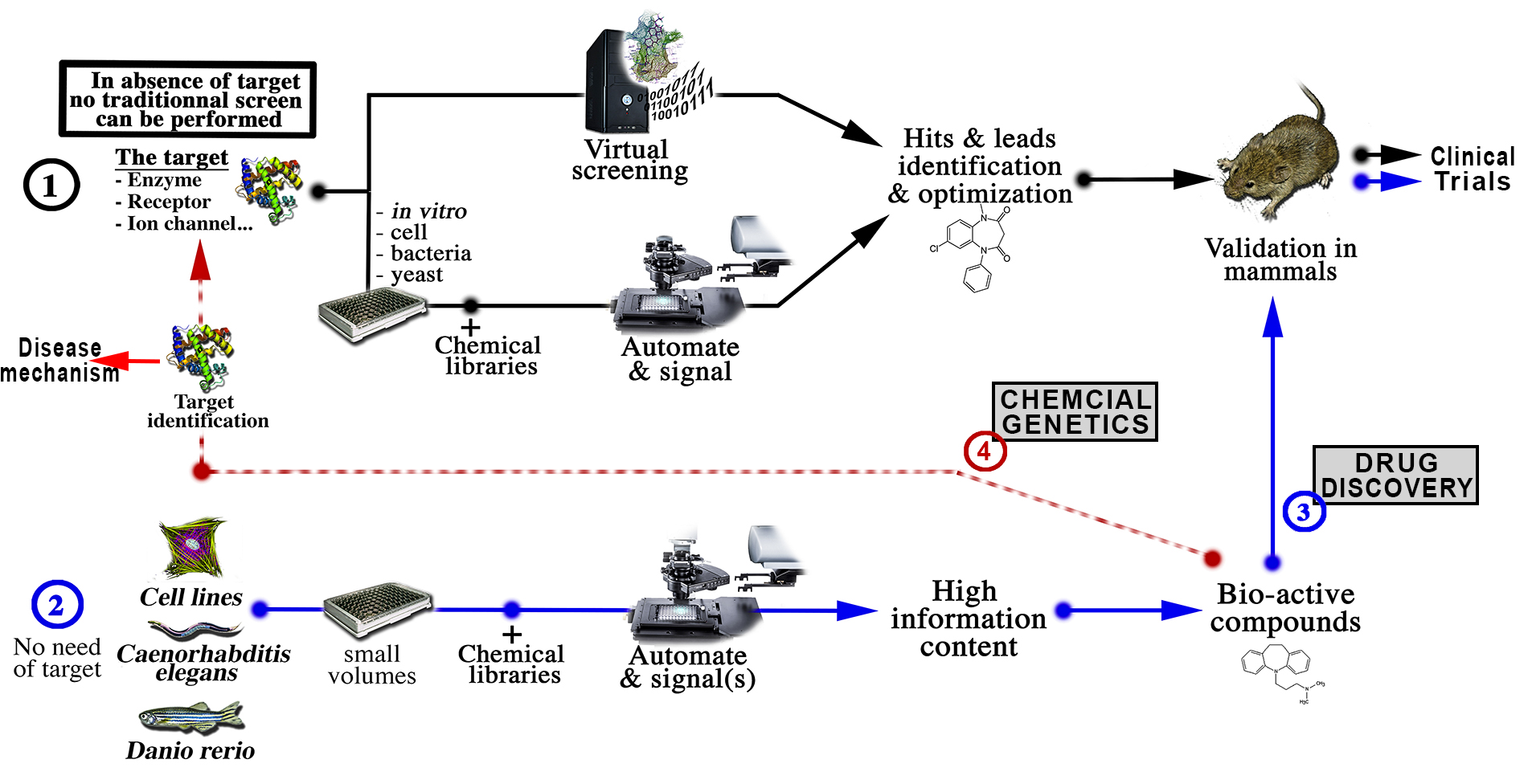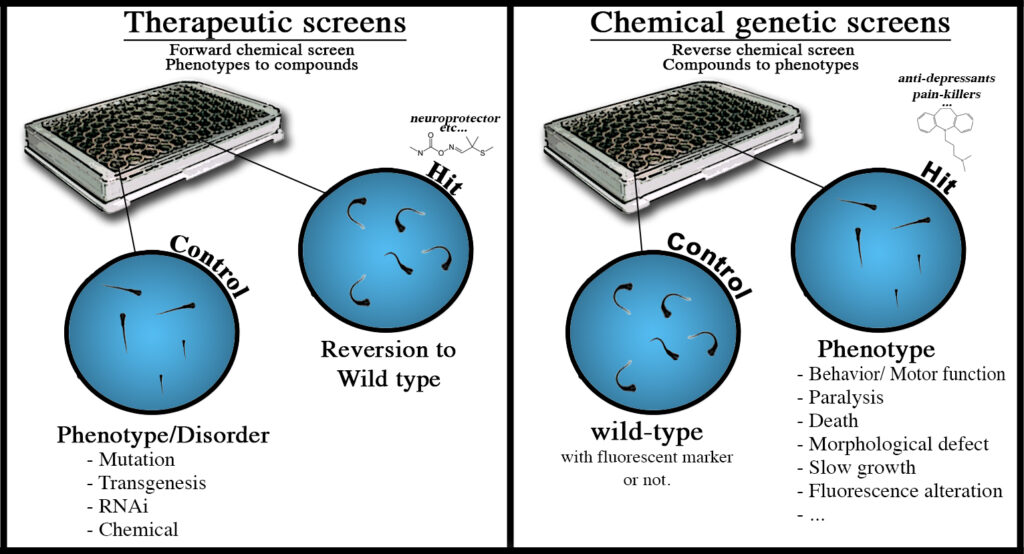
1 – Traditional drug discovery pipeline.
The traditional drug discovery pipeline relies consists in screening large chemical libraries to find compounds able to bing and/or modify the activity of specific molecular targets. This screening principle relies almost entirely on our knowledge of the different human diseases and on the relevance of the chosen target. Unfortunately, first, many human diseases such as neurological or neurodegenerative disorders, are still poorly understood to date. Making difficult the identification of relevant targets to be used in the screen. Second, most compounds found to be active in vitro turned out to be toxic or not bioavailable when tested in vivo in later stages. Third, many diseases, such as motor neuron diseases (MNDs) are neglected by the big pharma as considered as “non-bankable” (not enough patients to warrant running large and expensive drug discovery programs). Although those drug discovery programs are still useful today, there is a need in developing innovative approaches to fill the aforementioned gaps.
2/3 – Phenotypic screening for drug discovery.
Phenotypic screening represents an attractive complementary strategy to traditional drug discovery technologies based on target binding or function. It actually could be an “alternative” when no druggable target is known or for poorly understood diseases such as most neurological and neurodegenerative diseases.
The principle is simple. Rather than focusing on a target or a known disease mechanism, we work at recapitulating/reproducing the human disorders or some features of them in a cell or in a small organism compatible with high throughput technologies and screening procedures. Based on the generated phenotypes (ex. progressive loss of motor function due to neurodegeneration for MNDs for instance), we establish assays to look for compounds that would rescue or slow down the progress of the disease (ex. restoring motor function). This approach does not depend on the existence of a specific target on our knowledge of the disease.
4 – Chemical genetics.
In addition, and very importantly, a phenotypic screening strategy also has the potential to unveil unsuspected diseases mechanisms. Indeed, by working at deciphering the mechanisms of action of drugs that rescue our phenotype, or potentially aggravated them, we can identify “druggable targets” that could be used in basic research to better understand the underlying disease mechanisms. Such targets could also be translated back to traditional screening systems as presented in the schematics above.
To hear more, watch out our video below or have a look at our publications here.

Two types of screens can be conducted.
1. Therapeutic screening where we try to find compounds with therapeutic potential for a specific disease or a specific biological condition.
2. Chemical genetic screens where we test molecules on healthy animals to explore for their potential bioactivity or toxicity. These types of screens have tremendous potential to enable the discovery of novel and unexpected bioactive chemical scaffolds.

High throughput screening and small animal models: Where are we?
Article presenting more in details the advantages and potential ofphenotypic screening.
read moreWe are using the zebrafish model to establish drug screening campaigns in the search for new bioactive molecules. Our approaches enable the search of a wide diversity of bioactivities and we are working every day at optimising our platform and assays.
A 10 minutes presentation of the power of phenotypic screening and chemical genetics (extract from a 2017 seminar).
Quick animation presenting the whole nervous system, striated muscle fibres, and mitochondria in an alive zebrafish.
©Giacomotto’s LAB

